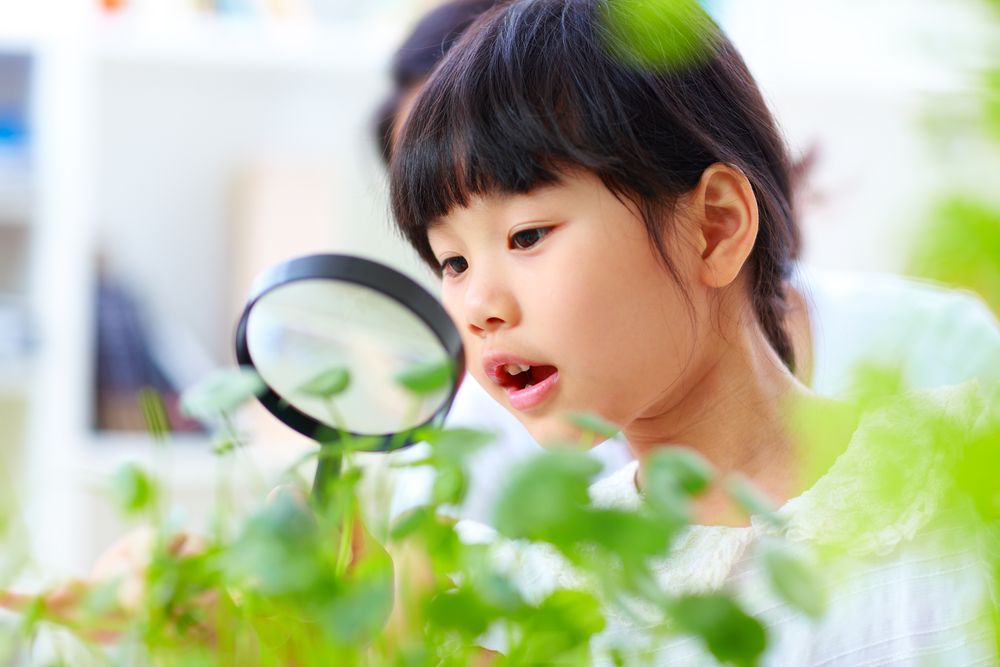Nurturing Growth and Well-being: How Children Benefit from Biophilic Design
jayanthi . Follow
9 months ago
In the fast-paced and technologically driven world we live in, the importance of creating environments that foster the well-being and development of children cannot be overstated. Biophilic design, an approach that incorporates elements of nature into built environments, has gained recognition for its positive impact on human health and happiness. This article explores the specific ways in which children benefit from biophilic design, emphasizing the role of nature-inspired spaces in enhancing learning, creativity, and overall well-being.

Understanding Biophilic Design:
**1. Connection to Nature:
· Biophilic design revolves around the idea of creating spaces that mimic or incorporate elements of nature. This connection to the natural world has proven to have profound effects on mental and physical health for individuals of all ages, including children.
**2. Key Biophilic Design Elements:
· Elements such as natural light, indoor plants, water features, and materials inspired by nature are integral to biophilic design. These elements are strategically incorporated into the design of spaces to create a harmonious and calming environment.
How Children Benefit from Biophilic Design:
**1. Enhanced Learning Environments:
· Biophilic design in educational settings has been linked to improved academic performance. Classrooms with ample natural light, views of greenery, and nature-inspired decor create an environment conducive to learning and concentration.
**2. Stimulated Creativity:
· Exposure to nature has been shown to stimulate creativity in children. Biophilic design encourages creativity by incorporating natural elements, colors, and patterns that inspire imagination. This can positively impact artistic expression, problem-solving, and critical thinking skills.
**3. Reduced Stress and Anxiety:
· Nature has a calming effect on the human mind, and children are no exception. Spaces designed with biophilic principles can help reduce stress and anxiety levels in children, creating a more relaxed and conducive atmosphere for learning and play.
**4. Improved Concentration and Focus:
· Biophilic design elements, such as views of greenery or the presence of natural materials, have been associated with improved concentration and focus. This is particularly beneficial in educational settings, where sustained attention is crucial for academic success.
Biophilic Design in Different Spaces:
**1. Biophilic Classrooms:
· Classrooms designed with biophilic principles often feature large windows, indoor plants, and nature-inspired decor. These elements contribute to a positive learning environment, fostering engagement and a sense of connection to the natural world.
**2. Biophilic Play Areas:
· Play areas designed with biophilic elements promote active and imaginative play. Incorporating natural materials, climbing structures inspired by nature, and even sensory gardens can enhance the play experience for children, encouraging physical activity and exploration.
**3. Biophilic Bedrooms:
· Designing children's bedrooms with biophilic elements can create a serene and restful space. Consider using natural materials for furniture, incorporating plants, and choosing calming color schemes inspired by nature to promote a peaceful sleep environment.
Practical Implementation Tips:
**1. Maximize Natural Light:
· Ensure that spaces for children, whether classrooms or play areas, maximize access to natural light. Natural light has been linked to improved mood, productivity, and overall well-being.
**2. Integrate Indoor Plants:
· Indoor plants not only improve air quality but also contribute to the aesthetic appeal of a space. Select child-friendly plants and involve children in caring for them, fostering a sense of responsibility and connection to nature.
**3. Nature-Inspired Art and Decor:
· Incorporate nature-inspired art and decor into children's spaces. Murals, artwork featuring animals, and decorations inspired by the natural world can create a visually stimulating and engaging environment.
**4. Create Outdoor Learning Spaces:
· Extend biophilic design to outdoor spaces. Creating outdoor learning areas with features like vegetable gardens, natural play structures, and open grassy spaces enhances the connection to nature and provides opportunities for hands-on learning.
SEO Best Practices for Articles on Biophilic Design for Children:
To optimize the article for search engines and improve readability, consider the following SEO best practices:
1. Keyword Optimization:
· Integrate relevant keywords such as "biophilic design for children," "nature-inspired classrooms," and "benefits of nature in education" throughout the article. This enhances the visibility of your content in search engine results.
2. Clear and Descriptive Headings:
· Use clear and descriptive headings that accurately represent the content within each section. This enhances readability and helps search engines understand the structure of your article.
3. Engaging Meta Description:
· Craft an engaging meta description that succinctly summarizes the key benefits of biophilic design for children. An enticing meta description encourages users to click on your link when it appears in search results.
4. Visual Content:
· Incorporate relevant images, such as photos of biophilic classrooms, play areas, and nature-inspired decor. Visual content enhances the user experience and contributes to better SEO.
5. Internal and External Links:
· Include relevant internal links to other articles on your website, such as additional resources on biophilic design or related educational topics. Additionally, incorporate authoritative external links to reputable sources, such as research studies on the impact of nature on child development.
6. Mobile Optimization:
· Given the trend of mobile content consumption, ensure that your website is optimized for mobile devices. Many users researching topics related to children's well-being may do so through smartphones or tablets.
7. Regular Updates:
· As research on biophilic design evolves and new case studies emerge, consider updating your article periodically to reflect the latest insights, best practices, or innovative implementations. This signals to search engines that your content is current and relevant.
Conclusion:
Biophilic design for children goes beyond aesthetics; it is a holistic approach that nurtures growth, creativity, and well-being. By incorporating elements of nature into educational and play spaces, we can create environments that support children's physical, emotional, and cognitive development. The benefits of biophilic design extend far beyond the immediate visual appeal, shaping positive experiences and fostering a lifelong connection to the natural world.




